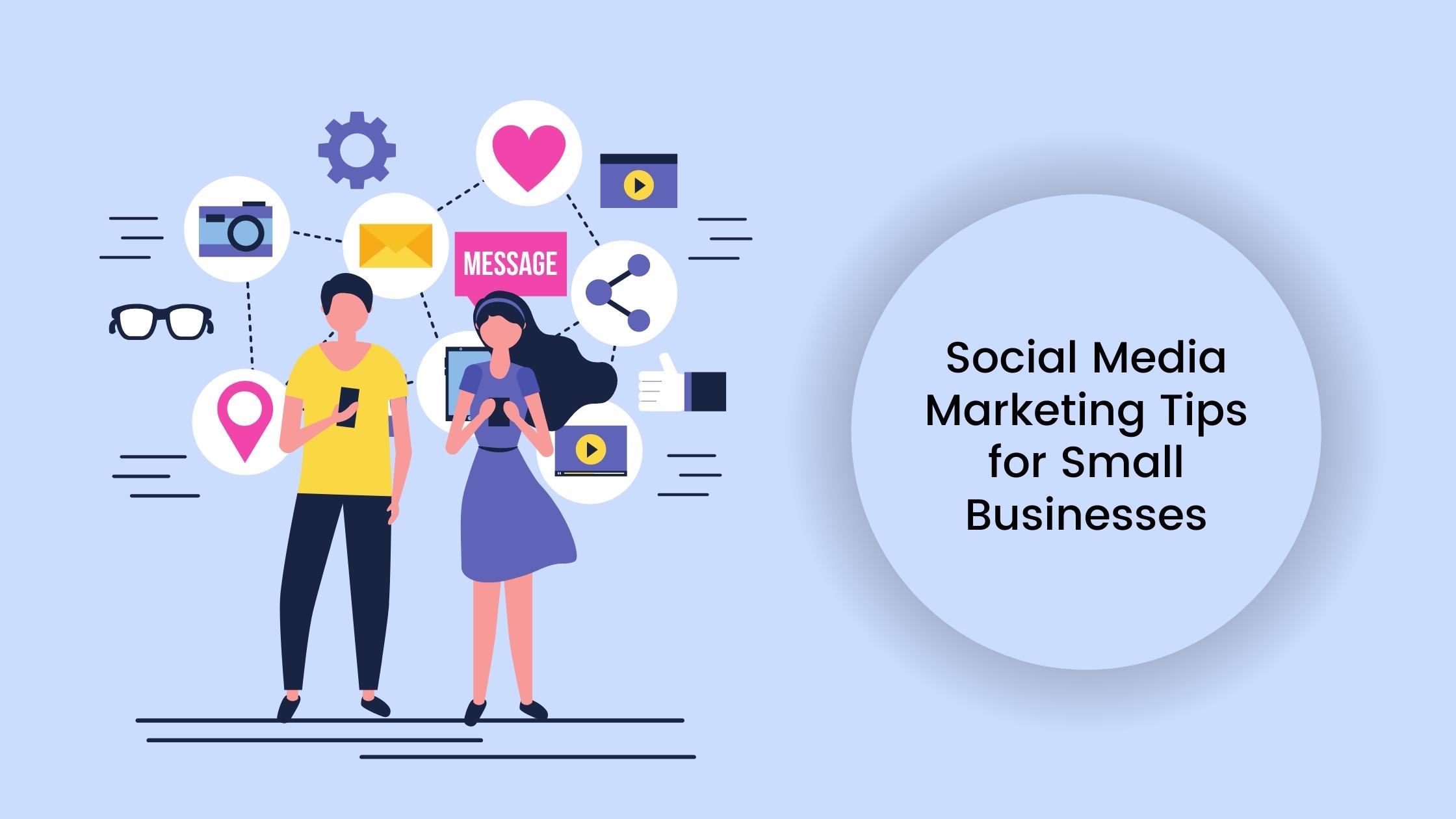Capitalizing on Meta for advertising provides distinctive opportunities not found in Google Ads. Whether you aim for lead generation or e-commerce success.
Continue reading to discover some frameworks for creating effective lead generation and e-commerce strategies within Meta’s automated environment.

Meta Ads Vs. Google Ads
When advertising on platforms such as Google, your reach is confined to individuals actively searching for your product or service. In contrast, placing ads on social platforms like Facebook and Instagram offers a broader range of possibilities.
While Google Ads capture existing demand from those actively searching, it is limited by the finite number of searches for specific keywords. In contrast, paid social advertising allows you to engage with consumers higher up in the funnel, enabling you to educate and create demand before capturing it later.
How To Allocate Budget to Google or Meta
For brands selling products, Meta is likely effective, while those dealing in commoditized items like electronic appliances might benefit more from leading with Google.
However, running campaigns across all channels is generally optimal, providing multiple revenue sources for better diversification.
Even though Meta ads are renowned for driving ecommerce results, Facebook and Instagram ads can also serve as effective tools for lead generation. To achieve this, a well-thought-out strategy is crucial to ensure that your message reaches the right consumers.
You can also read: Social Media Marketing Tips for Small Business
The challenge of Using Meta Lead Generation
Campaigns on Facebook and Instagram can yield impressive results as there is a significant likelihood of encountering a high volume of spam leads.
The platform’s optimization tends to prioritize form submissions over real-time revenue, a characteristic distinct from ecommerce-focused platforms.
This emphasis may lead to a higher quantity of leads, albeit of lower quality. Striking the right balance becomes crucial in the pursuit of better-quality leads, even if it translates to a reduction in overall form submissions
It’s essential to bear in mind that leads don’t equate to sales – you can’t deposit leads into your bank account, lol. Therefore, it’s of utmost importance to devise strategies that attract high-quality leads.
Lead Generation Framework
Below are lead generation strategies designed to tackle challenges like spam and enhance the effectiveness of lead generation through Facebook and Instagram ads.
Prioritize Leads Over Traffic
Choosing the appropriate campaign objective is crucial, considering the specificity of the Meta algorithm. Deciding on a traffic-focused campaign may increase website visits, but it doesn’t guarantee the generation of leads.
For successful sales and inbound inquiries, it is advisable to opt for a conversion-focused campaign customized to drive leads, utilizing pixel tracking for enhanced effectiveness.
Experiment with Dynamic and Standard Creative
When devising your Facebook campaign, the decision between creating individual ads and using dynamic creative, akin to Google’s responsive search ads, carries significance, and it is advantageous to explore both alternatives.
Nevertheless, it is recommended to experiment with diverse targets and ad creatives, given the effectiveness of dynamic creatives, particularly in the context of smaller lead-generation campaigns.
With dynamic creative, you provide a set of ad copy and creative elements, enabling the system to tailor the ad for each user.
Using conservative budgets in lead generation campaigns, where there may be insufficient data to optimize specific ads, is advisable, as it facilitates the system’s algorithmic targeting of users.
You can also read: What To Do When Your SEO is Good But Sales And Leads Are Low
Use Customer Lookalikes and Interests
The effectiveness of the pixel in targeting based on website activity is particularly notable for lead generation, especially on newer or smaller accounts.
Custom audiences can prove highly effective in this context. Instead of opting for broad targeting, consider creating lookalike audiences derived from your customer list or qualified leads.
There’s inherent value in instructing the system about individuals interested in specific topics or belonging to certain demographics, recognizing them as potential consumers.
Additionally, integrating Advantage+ targeting, extending beyond your defined audiences by approximately 20%, allows you to reach users who may not fit within the specific audience categories you’ve established.
In contrast to ecommerce, where real-time revenue tracking is feasible, lead generation often requires a bit more nuanced signaling. This approach enhances lead quality by ensuring that ads reach more engaged users.
Leverage Facebook and Instagram
Despite advertisers frequently trying to manually control the placement of their ads, placing trust in the algorithm is the most effective approach.
It is ideal to permit the system to showcase ads across Facebook, Instagram, and Messenger, enabling the efficient management of ad placements based on conversion events.
Nevertheless, it is essential not to restrict exposure through manual adjustments, as this may result in higher costs and missed opportunities.
The consistent relevance of this principle across diverse ad platforms emphasizes that limiting exposure could increase costs and neglect untapped potential.
You can also read: 5 Most Popular Social Media Platforms in 2024
Expand Your Creative Horizons Beyond Videos
After identifying your target audience, the subsequent critical step is creating your message. While ecommerce typically gives precedence to video creatives, it’s noteworthy that image ads exhibit surprising effectiveness in lead generation.
Although video ads can be impactful, particularly in lead generation, the creation of high-quality videos may present challenges.
Using simple images or adding text overlays to an image, akin to banner ads, has proven to be effective. Given the diverse nature of your audiences, the messaging in your image ad or the accompanying copy serves as a method of targeting.
Develop Dedicated Landing Pages
In lead generation, the destination holds significant importance when a user clicks on your ad. Therefore, it’s crucial to contemplate various options, including directing them to your homepage, a dedicated landing page, or using embedded forms on Facebook or Instagram.
While opting for an embedded form may result in fewer leads, the ones you do obtain are likely to be of higher quality. This is because individuals prone to spam are less inclined to complete a form that involves additional effort.
It’s noteworthy that embedded forms on Facebook and Instagram come pre-populated with the user’s account information, such as their name and email. This feature enhances the form’s convenience, making it easier for users to fill out.
Distinguish Conversions from Sales
It’s imperative to trace the origin of each lead. Integrating UTM parameters into your ads allows you to promptly identify the specific campaign, ad set, and ad creative from which a particular lead originated in real-time.
By consistently analyzing this data within your CRM, you can discern emerging patterns. For instance, a detailed breakdown of 30 leads from a specific campaign, along with their current statuses, can offer valuable insights.
Isolating and scrutinizing such data helps pinpoint successful elements, whether it’s a specific creative that resonates with consumers or particular audience segments that outperform others. Leveraging this information proves invaluable in optimizing your future lead-generation endeavors.
Ecommerce Ads for Facebook and Instagram
Ecommerce exhibits a distinct characteristic in that the system automatically tracks revenue in real-time. This streamlined process is facilitated by the direct translation of a lead into a sale.
Despite this efficiency, industries grappling with high fraud rates may present certain challenges. The real-time tracking of revenue allows for the assignment of a dollar value to each order, facilitating alignment with profit-centric optimization.
Many direct-to-consumer (DTC) operators integrate Meta ads and email into their marketing mix. There’s an opportunity to explore other campaigns on the Google side, such as Performance Max, Demand Gen, YouTube, and so forth, to capture additional demand in diverse ways.
Ecommerce Framework
Here is a guide designed to produce successful ecommerce outcomes through strategic usage of Facebook and Instagram ads.
Approach Advantage+ Testing Thoughtfully
In contrast to lead generation campaigns, where the primary focus is on conversion, ecommerce introduces a distinct campaign type known as Advantage Plus Shopping. This automated and algorithmic approach, with fewer controls, bears similarities to Google’s Performance Max.
Advantage Plus Shopping operates on a broader and less structured scale compared to a standard conversion-focused purchase campaign. We’ve discovered the importance of trying both [Advantage Plus Shopping and conversion campaign types] to measure their effectiveness.
For some clients, Advantage Plus often outperforms, while for others, we have observed that the standard purchase conversions work better. In certain cases, a combination of running them simultaneously for different products or promotions yields optimal results.
Embrace Broad Targeting
In ecommerce campaigns using broad targeting, it is beneficial to let the system freely target individuals assessed as most likely to make a purchase, excluding recent buyers within the last 30 days.
Introducing additional audience constraints can artificially increase CPMs, making a broader approach generally more effective. Relying on the robust Meta algorithm to identify promising targets based on real-time revenue data tends to yield positive results.
Prioritize Purchases Over Add to Cart and Clicks
In ecommerce, precision in setting campaign objectives is paramount when running conversion campaigns. While the robust system is adept at delivering specified outcomes, indicating actions like “add to carts” or “clicks” may not necessarily translate into actual sales.
If you specify that you want clicks, you’ll indeed get clicks, but these clicks may not necessarily convert into sales. Therefore, when running a purchase conversions campaign, ensure a laser focus on purchases because that’s what you ultimately need – revenue. Direct your attention to that specific goal.
Rely on Click Attribution
In ecommerce, the approach to attribution differs from that in lead generation. While a one-day window may be adequate for leads, ecommerce purchases often necessitate a more prolonged duration.
It is generally advisable to adopt a seven-day click attribution. This extended timeframe accommodates the entire purchase journey, recognizing that a user who clicks on an ad may not be ready to make a purchase on the same day.
It is advised to avoid one-day view attributions, as they can artificially inflate attribution figures due to the widespread exposure of ads on Facebook and Instagram.
As a rule of thumb, we recommend using a seven-day click attribution, unless you are dealing with impulse purchases. In such instances, a one-day click should be sufficient.
Innovate with Creatives
The significance of testing in online marketing creative strategies cannot be overstated. Experimenting with various formats, such as image ads, video ads, and carousel ads, is crucial.
Within each format, a diverse range of approaches can be explored:
- For image ads, potential options include experimenting with product shots, lifestyle images, comparison visuals, or showcasing media mentions and customer reviews.
- Videos offer a wide spectrum of possibilities, ranging from high-production content to user-generated material, testimonials, and various lengths.
- Carousels provide the flexibility for dynamic catalog ads, presenting a variety of options.
Recognizing the absence of a one-size-fits-all solution, it becomes imperative to test different creative elements to identify what resonates best with your brand. An approach that proves effective for one brand may not necessarily yield the same success for another.
Align Creative Rotation with Expenditure
When testing new creative assets, it is essential to focus on the traffic flow through a specific ad rather than adhering to a specific time or budget. Ideally, a substantial amount of traffic, ranging from hundreds to even a couple of thousand clicks, is preferred to establish statistical significance.
This approach ensures that the collected data is robust and reliable, allowing for informed decision-making. Limited clicks or orders make it challenging to measure the creative’s effectiveness on a larger scale.
Emphasizing the volume of traffic passing through an ad facilitates a more comprehensive evaluation of its impact.
You can also read: Importance of Meta Tags in SEO: Explained
Maintain Naming Consistency
Consistent ad naming conventions play a crucial role in effectively monitoring the performance of creative assets.
By appropriately labeling your ads, including details like asset type, destination, call-to-action, and more, you can easily filter and report on their effectiveness.
This systematic approach enables the comparison of different ad types, such as image ads versus video ads or influencer campaigns versus others.
Consistent ad naming guarantees a quick and accurate analysis of your data, helping you to make well-informed decisions about your advertising strategy.
In Conclusion
Whether executing a lead generation or ecommerce campaign on Facebook and Instagram, certain essential strategies should be prioritized. For lead generation, concentrate on:
- Spam Reduction.
- Precision in Targeting.
- Highlighting the Offer.
- Effective Messaging.
In contrast, for ecommerce endeavors, entrust the system with a more substantial role in targeting while placing heightened importance on testing various creative components.
Both Facebook and Instagram prove valuable additions to your marketing endeavors. However, it’s vital to seamlessly integrate them into your overarching strategy.
As advertising platforms advance in sophistication and reliance on algorithms, grasping the optimal balance between letting the system handle tasks and when to intervene becomes pivotal.
Would you like to read more about “How To Create a Successful Strategy for Instagram and Facebook” related articles? If so, we invite you to take a look at our other tech topics before you leave!










